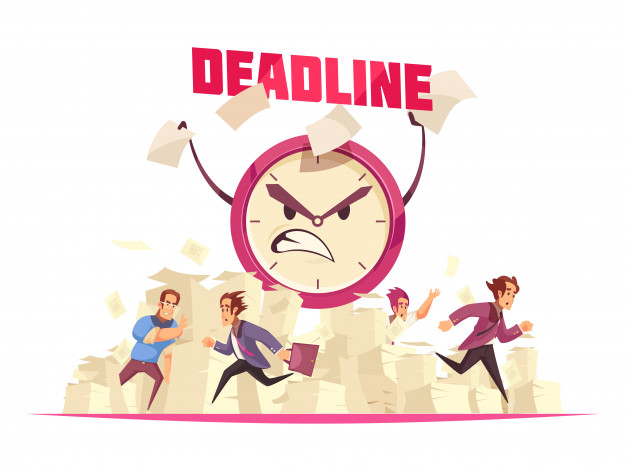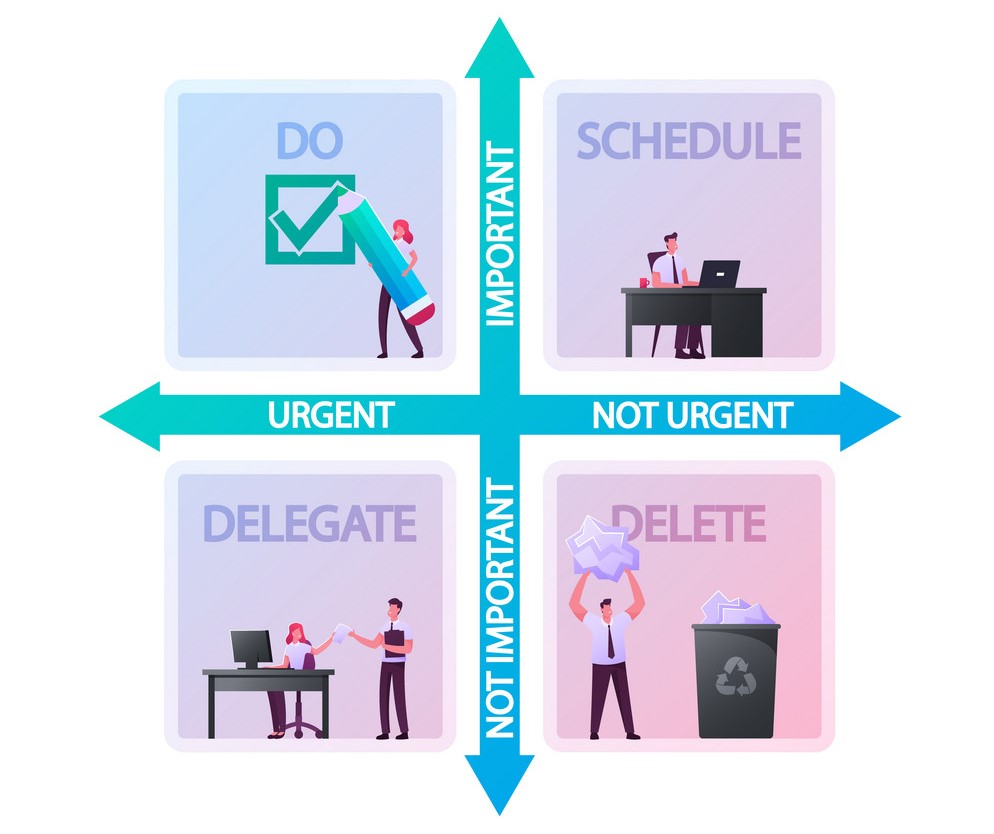Life can be pretty simple if you know how to improve in time management.
// If time management is an art, be an artist //
In case you don’t, you might find yourself juggling between work through the day and still feel the constant duress of not doing enough. You are not alone. We all have been there at some point of life where we have felt we are not enough.
So what do you do? I wish I could tell you avoiding responsibilities was an option. Rather, let’s figure out how to improve in time management and stay relaxed while accomplishing everything on the check-list.
Caution: This article is for those, who WANT to improve in time management but don’t know how to do it. The motive to write this, in no way, is to make you feel guilty for your lifestyle. If you’re happy with what you have, there’s no need to take on a time management battle because some random writer told you it’s important!
At any given moment you are doing exactly what you want to be doing. “If you’re not doing something, that simply means that something is not a priority. But don’t pretend like you ‘don’t have’ time.”
Dr Ali Abdaal
The first step of improving in time management is to recognise that you are in charge of what you do with your time. Unless you believe it, no matter how many resources there might be, you’ll always find excuses of ‘not getting enough time’. Have belief, your time is entirely under your control.
For instance, right now I am writing this article because that’s what I want to do with my time. You are reading this article because you want to read this article. So, stop fooling yourself that you don’t have time for something. The only reason you are not doing it is because that’s simply not important.
What is time management?
Allotting a specific amount of time for a specific task-is time management.
The name is pretty self-explanatory. Whenever you’re managing your time-you are carrying out time management.

On some days, you can’t fit your work into the timeframe that you have, on some days you can’t find a thing to do. In both the cases, you performed ‘time management’. Although, these are not much appreciated and called ‘bad management of time’ because these are not enhancing your productivity.
In practical life, when someone’s talking about ‘how to improve in time management’, they want to know about the optimization and planning that can bring out the best from you. Efficient allocation of work is not only desired, but also very necessary in the present times.
Because now, there isn’t a single person who’s not swamped with multi-dimensional responsibilities.
How to Improve in Time management through 3 Techniques
The Pomodoro Technique
Pomodoro is the Italian word for tomato. The technique is named after the cute kitchen timers that are tomato shaped. It tells you to strike a balance between quality and quantity.
In the late 1980s, a university student Francesco Cirillo was struggling to focus on his academic activities. That’s when, overwhelmed, he asked himself to commit to just 10 minutes of focused study time. Thus, our ‘Pomodoro Technique’ was developed.
All you have to do is, pay attention for 25 minutes at one go. Take a task and Work 25 minutes on that. A 25-minute deep work session is called ‘one pomodoro’

After 25 minutes of deep work, take a short 5-minute break. You can take a break after every four ‘Pomodoros’.
The Pareto Principle
Pareto’s principle is also known as the 80-20 Rule. This time management technique says that 20% of the efforts can generate 80% of results.
Know what you want to achieve. Identify what could make the greatest impact and get it done. So that you can protect that 2 most effective activity from the 8 that are trivial.
“If you’re Noah, and your ark is about to sink, look for the elephants first, because you can throw over a bunch of cats, dogs, squirrels, and everything else that is just a small animal and your ark will keep sinking. But if you can find one elephant to get overboard, you’re in much better shape.”
Wilfried Fritz Pareto
The Pareto principle can be the filter that can rescue us from the habit of getting too many things into our plate. So, go for what could make the highest difference.

You can read this article for more on the Pareto Principle.
The Eisenhower Matrix
There was an American army general and statesman who served as the 34th President of the United States from 1953 to 1961. His name was Dwight David Eisenhower.
He invented the world-famous Eisenhower Method. The matrix consists of 4 quadrants and two axes- the axis of importance and the axis of urgency.
The 4 D’s of Time Management: Do, Defer, Delegate, Delete

Eisenhower Matrix is a method which tells you to prioritize the works you have on the basis of their urgency. It helps to define the activities which are important and leave out the ones which do not deserve your attention at all. So that you don’t have to burn out doing something that you could just have delegated or deleted.
One of his famous quotes is, “most things which are urgent are not important, and most things which are important are not urgent.”
Dwight David Eisenhower
Which Method Suits You The Best?
Well that’s entirely up to you. Your motivation, your occupation, your personality- your entire being has to do with it. For that, you gotta know what you want accomplished, and you gotta know why.
You could use this as a guide to practice effective time management. Find and stick to the one that works for you to enhance your productivity and overall performance.

Never Stop Being Kind To Yourself
You came here to find answers for how to improve in time management and achieve more. Your productivity is only a matter of concern after your physical and mental well being.
People often tend to forget that their achievement(s) doesn’t matter if they can’t enjoy the feeling of being accomplished. So, always remember to take care of your health and remember to be kind if you can’t follow a certain method.
Of Course there’s something that’s bound to work for you. Learn to say “no” politely. Stop pulling all-nighters for works that you could have easily avoided. Allow yourself to take breaks. Keep exploring and experimenting with your work to rest ratio.
Who knows? Someday you might even come up with a new concept of time management that will create history! Find me that day, I’ll be as pleased as punch to write about your method as well!
Authoress
Till then, make the best use of your time and be proud that you did!

























Leave a Reply